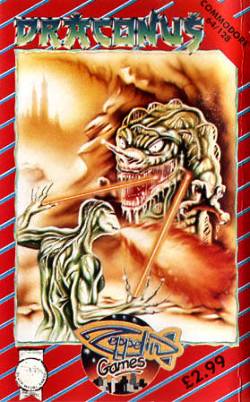This article has multiple issues. Please help improve it or discuss these issues on the talk page . (Learn how and when to remove these messages)
|
| Draconus | |
|---|---|
 | |
| Developer(s) | Zeppelin Games |
| Publisher(s) | Zeppelin Games |
| Designer(s) | Kevin Franklin Ian Copeland Brian Jobling Michael Owens |
| Composer(s) | Adam Gilmore |
| Platform(s) | |
| Release | 1988 |
| Genre(s) | Action-adventure |
| Mode(s) | Single-player |
Draconus is an action-adventure platform game developed and published by Zeppelin Games in 1988. It was released for the Atari 8-bit computers, Commodore 64, and ZX Spectrum. Draconus is similar to Metroid . [1]
